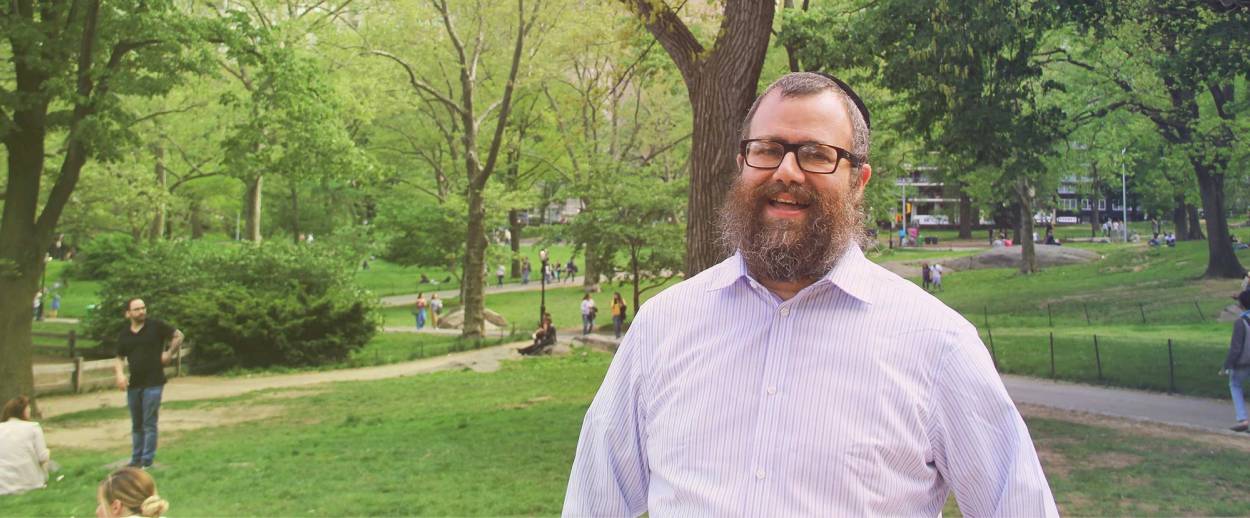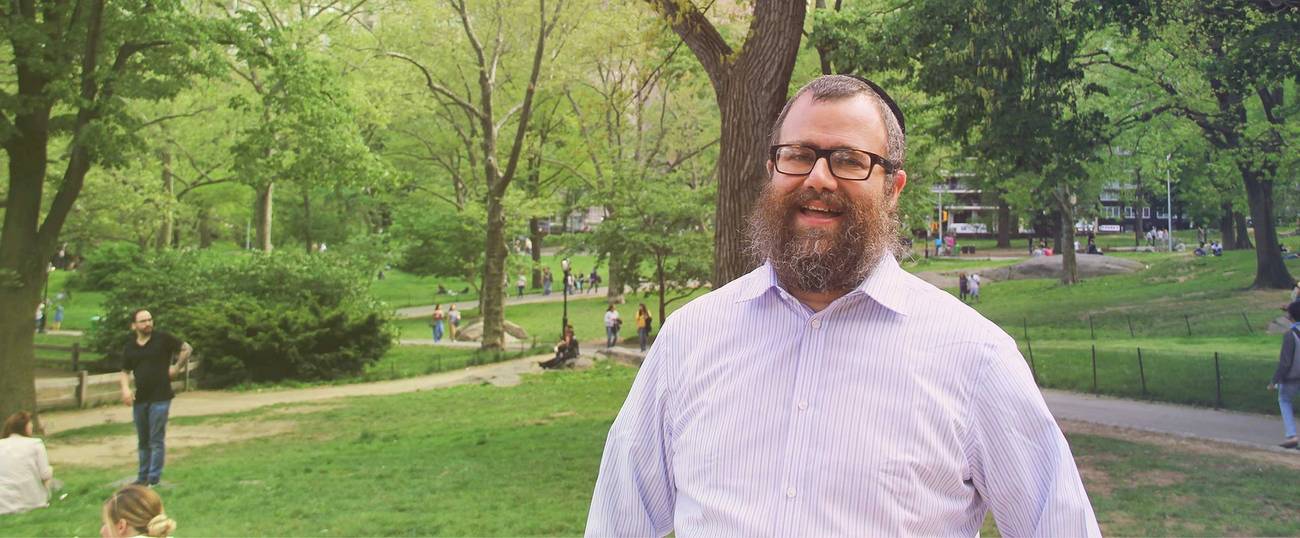Not Just for Hasidim Anymore
The Tanya, a Lubavitcher spiritual text, could be the next big thing for secular self-help




Recently I fell into the same old discussion with a close girlfriend. As we talked about work, dating, and all the day-to-day trials of New York City women in 2017, she told me that if I stopped assuming that everything would just repeat as it always had, I might actually be able to break the cycle. Then, when she expressed anxiety over people’s criticism of her, I reminded her that her critics might just have problems with how they see themselves. Sounds New Agey, right? For her, it was, sort of: She was speaking the language of mindfulness, meditation, and Buddhist retreats. But me? I was parroting the text I’ve spent most of my life studying: the Tanya. And once again, our conversation reached that point of discussion: Can we please start studying the Tanya together?
The original Hasidic self-help book, known as the Tanya, is a compendium of talks and teachings. Its first section, Likkutei Amarim, was apparently written in the late 1790s in Lithuania by Rabbi Schneur Zalman of Liadi, one of the first leaders of the Hasidic movement of ultra-Orthodox Judaism. (The original edition was said to be lost, and we now work from an 1814 edition.) At a time when practice was defined by intellectualism, not mysticism, Hasidic Judaism was about ecstasy, prayer, divine service, and connection to a “rebbe,” or master and teacher. Schneur Zalman originated the Chabad branch, which capitalized on the intellectualism of the Jewish scholarly world, bringing its intellectualism to the Hasidic emphasis on experience. Filled with references to Torah, Talmud, and of course, Kabbalah, the Tanya offered an approach to spiritual transformation that was designed to arouse even the headiest, heart-numbed scholar into a genuine love and awe of the divine.
Chabad-Lubavitch is now known more for its ubiquitous “Chabad House” outreach centers; meanwhile, the movement’s central text, the Tanya, remains obscure even to many who are touched by the Lubavitchers’ outreach. And to be fair, it’s not an immediately accessible read. Tefillin and Shabbat candles are, indeed, easier on-ramps to Jewish practice. So, mere days after my conversation with my friend, I was elated to find, in a Brooklyn bookstore laden with Jewish ritual items and leather-bound tomes, a Tanya for the uninitiated. With a distinct dark green cover and typeface that looked more appropriate for a Williamsburg café’s chalkboard, I pulled off the counter display The Practical Tanya, a new edition adapted by London-born, Brooklyn-based Rabbi Chaim Miller.
With a new translation and explanation of the text, Miller’s pathbreaking Tanya aims to funnel the teachings into practical steps that embody mystical principles for living one’s best life. Schneur Zalman, known in Chabad circles as the “Alter Rebbe,” meant to write a self-help volume for his Hasidic seekers, to replace interpersonal advisory sessions. “It was real advice to real people,” Miller told me. “He penetrated something about the psyche that was universal, and that’s why it hit home.” Written in a cerebral, structured way that was unique to Hasidic publications at the time, the Tanya sought to explain the mystical dimensions to an audience of traditional yeshiva students and scholars who otherwise viewed the Hasidic tendency toward Kabbalistic mystical themes as heresy. Through deep grounding in scholarly work, coupled with mystical teachings received from his teachers, the Baal Shem Tov (founder of the Hasidic movement) and Mezericher Maggid (his successor), the Tanya’s author created a framework for divine service that reconciled the underlying existential concerns of the average human, no matter his level of scholarship—by normalizing the experience of body and soul through Kabbalistic cosmology and practical self-help.
The Tanya comprises five sections, and so far Miller has adapted only the first, Likkutei Amarim, “A Collection of Talks.” Also called “The Book for In-Betweeners,” this section reintroduces a concept, briefly mentioned in the Talmud, of a person who is neither righteous nor wicked yet undergoes the daily struggle, the essential duality inherent within the human psyche. Miller’s goal is not simply to translate this text but to create the kind of text I can share with people like my friends—lovers of self-help books, meditation podcasts, and Facebook posts that remind us to take a deep breath.
“I called it The Practical Tanya because I wanted it to hit you,” Miller said. “‘How is it relatable?’ I ask that question on every line. The author of the Tanya provides a system for understanding that you are constantly operating on two levels of consciousness, divine and animal, likened to two souls within one body. What you choose to highlight, to embody, is what manifests, and helps you live a higher life … Each daily struggle depends on the two levels, the balance of good and evil, and how a person identifies with their actions on each level. It provides day-to-day reference points, reminding readers that you are not your thoughts or your actions, and change is possible in every minute. Truly, it is the essence of being in the moment.”
Validating the struggle helps readers of the Tanya to understand core concerns like laziness, apathy, guilt, depression, and sexual thoughts—major concerns, at the time, for traditional Jews and great scholars who couldn’t imagine how their commitment to Torah study wouldn’t change them from being essentially human. The Tanya describes all of this as essential humanity. Miller, who appreciates contemporary self-help writers like Eckhart Tolle, understands Tanya to be attractive to seekers by allowing them to “be irredeemably imperfect at the core.” In other sections, the Tanya details more of the cosmology of Kabbalah and how that relates to creation, including the manifestation of the universe based on God’s divine word. This concept helps one see the ultimate importance and significance of their existence and every action because they are all emanations of the divine.
***
At the time Hasidism began, it was considered heretical to believe that God, or the Divine Presence, is manifest everywhere, not just in the synagogue. In Hasidism, the Masters teach there is little that is wholly sacred or profane; most is simply that which is yet to be revealed, elevated, and transformed. Today, these ideas are not unfamiliar to those who explore other spiritual frameworks such as yoga, meditation, Buddhism, or Sufism—this kind of pantheism is, of course, New Age, or Eastern Wisdom Traditions 101.
Miller expressed regret that, while referring to the importance of a contemplative meditation practice, today’s rabbis often skimp on the explanation. The history and richness of Chabad contemplative practices, passed from teacher to student, were lost as the community was decimated by Stalin and Hitler. In a Jewish world where many consider themselves a “bad Jew” for not connecting with traditional Judaism taught by institutions, it is it an ideal time to reclaim the Tanya, in a more user-friendly format. It is the optimum time to bring the pathways of the Tanya into the United States urban jungle, as mindfulness, meditation, and spiritual traditions popularize and arrive at the forefront of Western consciousness.
Miller, who is in his early 40s, is the founder of the Brooklyn Holistic Synagogue. But he is best known for his adaptions of Hasidic teachings in translated editions of Torah, Megillat Esther, Tehillim (Psalms), Haftarot, a Friday night prayer book, and a Passover Haggadah, as well as Turning Judaism Outward, a biography of the seventh Lubavitcher rebbe. But he has an unusual history in observant Judaism, which gives him an edge in adapting ancient wisdom to a new audience. He had a typical British Jewish upbringing, in which “Judaism was a club where you drank Kiddush wine and judged each other for not being religious enough.” The synagogue experience involved reading texts that were incomprehensible, in English, while wearing top hats, and saying a prayer for the queen. “I thought I was smart, but I couldn’t understand the prayers,” he said. “Judaism was secretly shameful, something you felt connected to but couldn’t understand why, since experientially it was so horrible.”
While studying medicine at Leeds College, Miller encountered his first experience with Jewish wisdom. His search for meaning took him to a philosophy bookstore, where he encountered Maimonides. “That was an a-ha moment for me,” he said. “It never dawned on me that there was any intellectual content in Judaism. I never imagined there was any nourishment of the soul or the mind.” The search took him to a yeshiva in upstate New York, where the Tanya came his way. “I was obsessed,” he said. Using an older translation, he became a Tanya junkie, filling it with notes and diagrams. “Tanya was about validating struggle. It was relatable. It also introduced this whole Kabbalistic system of symbolism that appealed to me very much. It changed my whole worldview.”
Coming from a secular background, with little exposure to Jewish thought, Miller felt frustrated that others might be exposed to Tanya but not given the tools to fully understand it. “I wanted to get it out of the book and nourish ourselves with it,” he said. “I have to revisit the Tanya to bring out its nourishing qualities. As an outsider, I see that as a blessing. It gives the opportunity to reinvigorate our engagement by learning from someone with that energetic enthusiasm.”
When he was a boy, Ysoscher Katz, a former Satmar Hasid who now teaches at Yeshivat Chovevei Torah, the “Open Orthodoxy” seminary in the Bronx, was expelled from his Satmar yeshiva for studying the Tanya. The book was that revolutionary, and certainly viewed as such by mainstream Orthodoxy and Hasidism. Currently a teacher of the next generation of Modern Orthodox rabbis, Katz recently taught a unit on Hasidism with sections from the Tanya, exploring the dichotomy of living between two worlds, one of intellectual frameworks and traditional study overlaid with mystical experiences and practices of prayer and meditation.
While some view general mysticism as somewhat “superficial” or “lightweight,” said Katz, the Tanya “is the opposite of that.” It is, he said, a cerebral work, but the ideas are embodied and inspiring: “Tanya is a prism through which one can come to the world, a method in which one can grapple the complexity of life. It could happen a person isn’t looking to change anything in day-to-day practice, but life will change when you start seeing things differently.”
Charles Roth studied at the Lubavitcher Yeshiva in Crown Heights in the 1940s, when he was a child. After leaving Orthodoxy, he moved into humanistic psychology, and became a veteran of many “encounter groups.” But he still thinks of himself as a student of the Tanya. “I have several volumes of Tanya in Hebrew and English translation, and I often encounter many references to Tanya in other things that I study, I often pick it up to check it in the source,” Roth said. “The purpose of life is to lead a life free of the dominance of ego … And, that’s a lifetime struggle. I’m 91, and I am still in that struggle, but I feel it’s less of a struggle now than it was 10 years ago. And I attribute that to my studies of Hasidism in general, and the Tanya in particular.”
***
Like this article? Sign up for our Daily Digest to get Tablet Magazine’s new content in your inbox each morning.
Rishe Groner, a writer and strategist living in Brooklyn, is the founder of The Genesis.